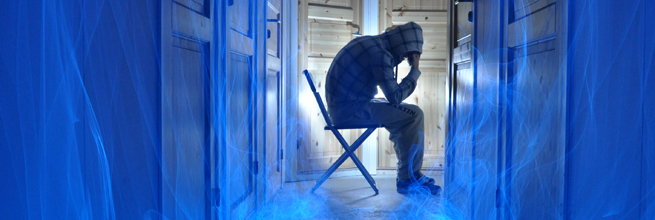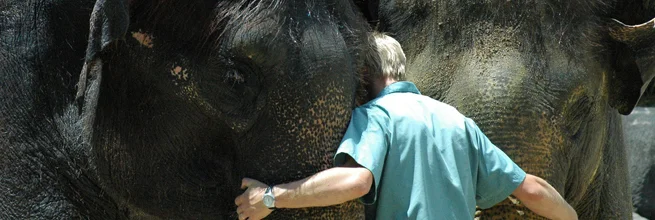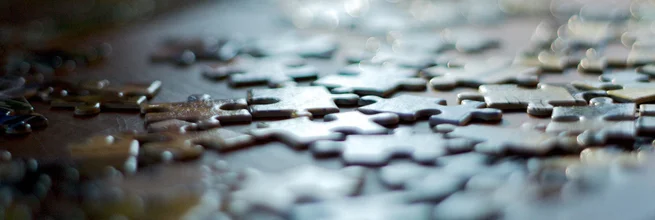Previously in this series:Learn to Share: A Primer | Part One: Setting the Stage | Part Two: Identifying Your Motives | Part Three: Becoming a Catalyst
Developing Synergy
HYPOTHESIS The best way to balance our commodity-driven culture is to contribute to the community through the open exchange of knowledge, ideas and information.
Two or more people working well together become more valuable than each person individually. This state is a form of synergy, and is more commonplace than you might think. Musical ensembles bring works to harmonic life in a way that each instrument alone cannot achieve, politicians campaigning together can drum up more votes than either of them can individually gather, and a group of individuals rallying for a united cause can achieve more than one person spending an equivalent amount of time working toward that cause on their own.
Put Yourself in the Right Place at the Right Time
As you proceed through identifying your motives and becoming a catalyst, you must pay attention to your surroundings. Keep your eyes peeled for opportunities to join a community and give of yourself for its greater good. Kirsten, one of the I Heart Art: Portland council members, recently wrote about putting herself in the right place at the right time, and I agree.
The next time you are drawn to someone, just go up to them and say hello, and see what happens. I happened to be at a talk with Matt Stichcomb from Etsy, and I just happened to run into some friends there, and I just happened to find myself in a meeting with Matt and about a dozen people at eight o'clock in the morning… I went because I was drawn to an opportunity. I had no idea where it would lead me, but I knew that it was important. —Kirsten Moore
I disagree with the notion of pure chance, luck or karma. Kirsten talks about having a sense for situations and people that might lead to her next opportunity. She doesn't aggressively pursue people or groups—rather, she recognizes when someone or something fits within her needs as an artist and contributor and puts herself out there to explore the possibilities.
Likewise, my own involvement with the I Heart Art: Portland project began with a casual meet-up at a local bar. Members of the Portland Etsy Team were invited to have a drink with some of Etsy's visiting administration. I had not really met anyone locally as far as community was concerned, so I knew that this was a great place to start.
One thing led to another, and I ended up spending a large part of the evening chatting with Shannon, the administrator of the Portland Etsy Team, about how to get more involved. A few weeks later, a message went up on the team forum (that she had encouraged me to join) about an open call for interest in a collaborative project between Etsy, Pacific Northwest College of Art and the Museum of Contemporary Craft. And I Heart Art was born.
Once you find these places to be and these people to talk to, start initiating conversations. You don't need to be incredibly extroverted (we established in the last chapter that I'm not), you just need to say hello, let your passions guide you and see where you end up after 30 minutes or an hour.
One day over lunch, my friend Diane introduced the concept of 30,000 foot-level conversations. She and I had been deep in discussion about the meaning of "free" and her recent investigation into the benefits of giving yourself away. I enjoyed that conversation so much that I started a weekly-ish coffee or lunch rendezvous with someone from my sphere of Twitter followers, and dubbed them Twitterdates. Each week I find someone new to meet up with and we have conversations that often reach outside my comfort zone and help build my own community in the process. This simple little method of meeting new people and putting myself out there has opened doorways to extremely interesting conversations, new opportunities and much more.
Find Your Place Among Others
Once you've identified a community that you want to belong to and let them know you'd like to be involved, there are some key questions that you should ask to make sure your contribution will find a good, supportive, appreciated place with others.
Does the community welome you? This is your first great sign as to whether or not your presence is valued. Is the community that is forming or that exists already ecumenical and multicultural? A community may very well target a niche of people, but it should always represent a broad spectrum of constituents and ideas. If it doesn't, it could suffocate on small-mindedness or exclusivity. Is the community adaptable to the needs of its members? Community should be organic and able to respond to evolving needs.
And what happens if a community is not welcoming? If they don't meet these criteria for an incubative environment, it might not be the right time or the right place. Don't take it personally. Shift your focus somewhere else and find something better or do a little more investigation into why it's not the right fit right now.
Even if you have found your place, I discovered recently (with the help of my friend Victor Maldonado) that community is ephemeral. Wait, what? That's exactly what I said when he told me. As I thought about it, though, it started to make sense. People come and people go. What works one year might not work the next. A community's members may graduate to the next thing or migrate to another community based on new needs. And that's okay. Being able to recognize when enough is enough and decide to move on or rethink things is often overlooked as a powerful community tool.
After two years of leading the charge on the I Heart Art: Portland project, I realized that despite my love for and dedication to the program, my own professional development and life goals were starting to interfere. It took me about three months to accept it, but when I finally concluded that I needed to step down as co-chair, I knew it was the right thing to do. I am also confident that the program will carry on successfully without me. There is a stellar leadership core at the helm and they all share the same passion. My time with the community is ephemeral, and yours will be, too.
Love the Ones You're With
For two years, the I Heart Art: Portland project has been led by a wonderful, solid group of individuals. A few have come and gone for various non-dramatic reasons (remember that community is ephemeral), but we've always felt like our group gelled together really well. Even when the first conversations about Etsy teaming up with PNCA and the Museum of Contemporary Craft were vague and conceptual, everyone was on the same page. And over the last two years, we've all become friends.
As community forms, the leaders and contributors of that community must understand roles, responsibilities and capabilities. Roles and responsibilities define a sense of purpose, and purpose is key to sustained activity and participation. I'm not saying you need to establish structure from the get-go, simply identify who is in charge of what in order to accomplish the community goals. This also establishes accountability in those who are contributing, which in turn develops a sense of pride in the work done as the community celebrates its successes.
Once the big community ball gets rolling, establishing expectations is crucial to setting your group up for success. Is it volunteer-based? How many hours per month is each volunteer expected to contribute? Set up the responsibilities so that you know who to go to with any given question. This will keep toes from getting stepped on and prevent one person from unwittingly taking on too much responsibility.
Celebrate the successes. If someone did a great job, tell them. Did a program, event or meeting go off without a hitch? Take a moment to reflect on how awesome that is, and if something does go awry or didn't go as planned, talk about what should be done next time and find a solution without pointing fingers.
Everyone Has Something to Contribute
Community should be egalitarian by nature, and by definition community is comprised of individuals, each of which have their own strengths, weaknesses, goals and personal progression. Each individual has something to contribute that will help make the community stronger.
Open, honest and respectful communication between community members is essential. Pass the talking stick around and let everyone have a turn to voice their opinion. Facilitating a culture of sharing will encourage people to contribute more and more. But if there's a voice that isn't loud enough or too timid to speak up, ensure that they have the opportunity to express their opinion and contribute in a way that makes them feel comfortable.
Everyone has different strengths, and everyone has different weaknesses. There's nothing wrong with having weaknesses, and despite a culture that's taught us to hide our weaknesses, we need to be comfortable acknowledging them. We can either turn to someone who has a complementary strength, or we can push our own limits with guidance in order to turn our own weakness around. Either way, we need community to do that.
Among the leadership council for the I Heart Art: Portland program, we've learned that some members are good at cold calling retail shops for our Mixer Match networking events, others are great at note-taking and proofreading, and still others are fantastic at organizing a food spread for an event. And there's far more than just that. As silly as it sounds, with our powers combined, we are a powerhouse team of event and program executors.
Keep the Current Running
Lewis Hyde talks about creativity as a gift that is to be shared with others, and as artists, we share our gift through the act of creation. But he also talks about the gift as needing to be rejuvenated from time to time. He states:
To have painted a painting does not empty the vessel out of which the paintings come. On the contrary, it is the talent which is not in use that is lost or atrophies, and to bestow one of our creations is the surest way to invoke the next. (The Gift, p. 189)
The same holds true as we give to community for the mutual benefit of all members. If done correctly by leaning on others and working toward a common goal, the act of contribution itself regenerates the gift and our ability to give it. But if done incorrectly, we experience burnout, community fatigue and start to feel like the community is monopolizing our time.
After a community is established, responsibilities are doled out, communication is open, and a group gels, how do you make it sustainable? Where is that sweet spot of working together? Especially when it comes to volunteer work, you need to find the balance between work, social needs, helping others and helping yourselves.
Give Credit Where Credit is Due
Nothing is more effective than encouraging a culture of recognition and letting others know that you appreciate their efforts, that they've done a good job, and that they are a valued contributor. Why should it be all business all the time? Find times to kick back and enjoy the company of others. Occasionally the I Heart Art council gets together just for happy hour. It's a chance to let the responsibilities get out of the way and build solid relationships.
Embrace the Ebb and Flow
Just as much as community is ephemeral, it ebbs and flows like the ocean tide. People come, people go. They give what they can, and what they need to give, and then they usually move on. Programs ramp up, hit their peak, then cycle down. We learned quickly that we couldn't run the I Heart Art program twelve months out of the year. We kick off in February, wind down in September or October, then give ourselves a break to plan for the next year and focus on our own creative endeavors (and many of us get caught up in the holiday craft show season).
Feed Your Soul
The night before the Hello Etsy PDX conference, we took all of the presenters out to dinner as an opportunity to share ideas and discuss some of the broader concepts that the conference was to encompass. I sat next to Jackie B Peterson, a whip-smart woman who helps creatives, artists and solopreneurs make the most out their business.
She already knew about my work with I Heart Art: Portland and my day job in communications and marketing, but had just discovered that I make jewelry as well. Wanting to know more about it, she inquired about how much time I spent on it and if it fits into my life-work balance. Then she asked, "So making bracelets feeds your soul." I paused, thinking to myself. "Well yes, I suppose it does."
Our conversation moved on to another topic, but I kept chewing on her statement in the back of my mind because something wasn't sitting right about my response. About ten minutes later, I stopped her mid-sentence and slowly, thoughtfully responded:
You know, Jackie, I take it back. Making bracelets is an outlet for my creativity, but I wouldn't say it feeds my soul. It's not something I want to do day in and day out. What feeds my soul is this I Heart Art: Portland program. The fact that we are running a program that empowers creative people to succeed and make a living doing what they love is an amazing thing. That is what feeds my soul.
Her eyes narrowed and she smiled knowingly. And I realized for the first time why my bracelet-making had always taken back burner. My community feeds my soul. Find what feeds yours. Stoke the coals and fuel the fire, and you can't go wrong.
Collaborate
You will find that sitting around a table, sharing ideas and feeding off of one another's enthusiasm is absolutely invigorating. Cross-pollination is one of the more powerful ways to spread new ideas and open your mind. And yes, ten minds are most likely better than one. Everyone has something to contribute to make the whole better than the sum of its parts.
One caveat—avoid design by committee. Everyone should input, but adhere to roles and responsibilities and let the authority rest with the appropriate person.
Just as a person who cannot reach an apple on a tree can obtain it by lifting a second person up on their shoulders, building a community takes an army of contributors to make the whole greater than the sum of its parts. Developing synergy facilitates success in a way that cannot be achieved all on your own.
To be continued... Part Five: Making a Difference
The Connecting to Your Community series originated on the I Heart Art: Portland website as a follow-up to and expansion upon a salon discussion that I led for the program on March 30, 2011. Many thanks to Diane Gilleland for her stellar editing support.














